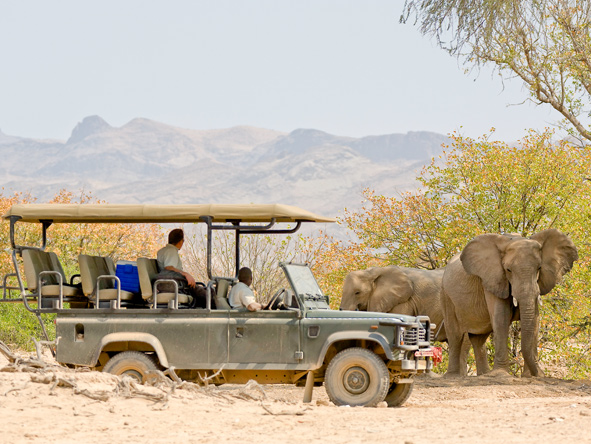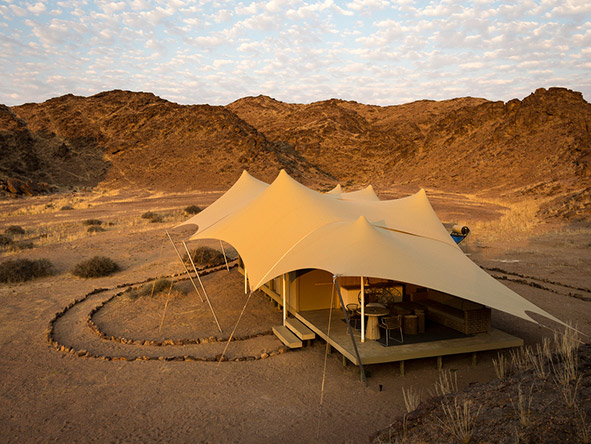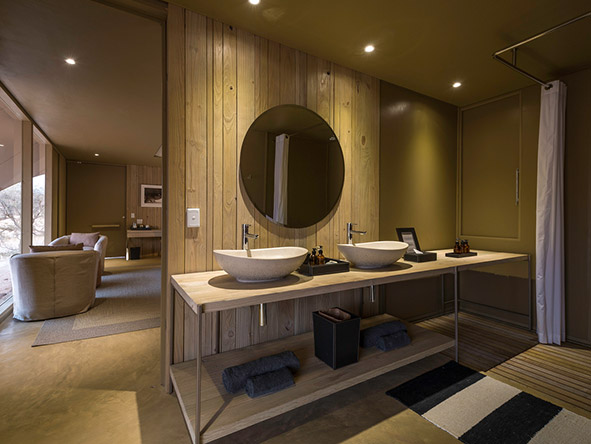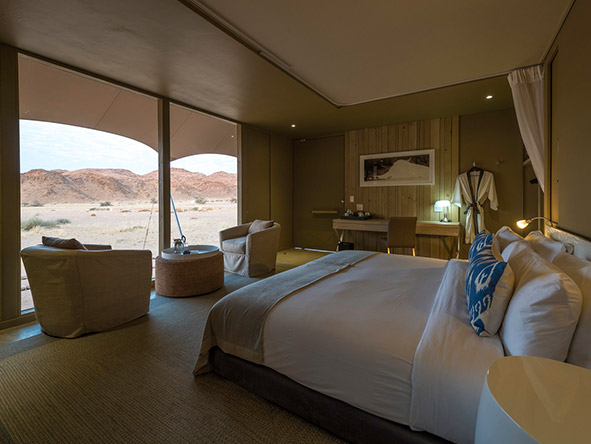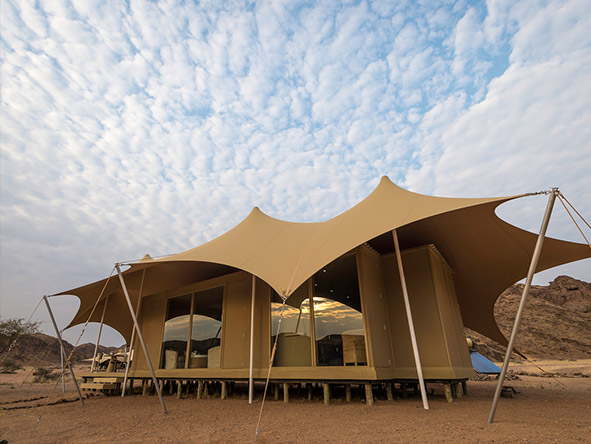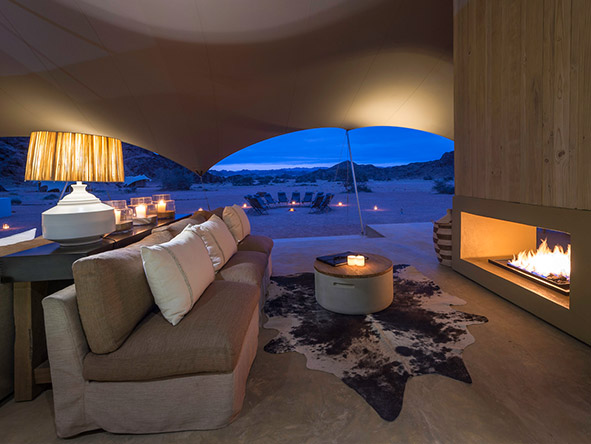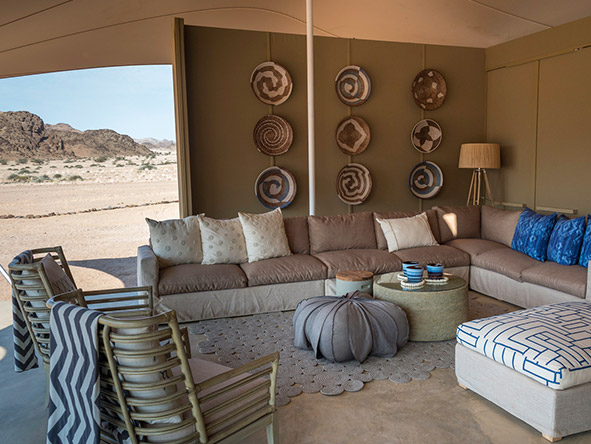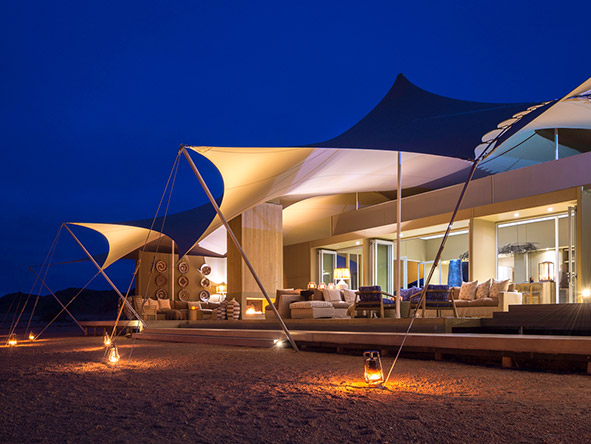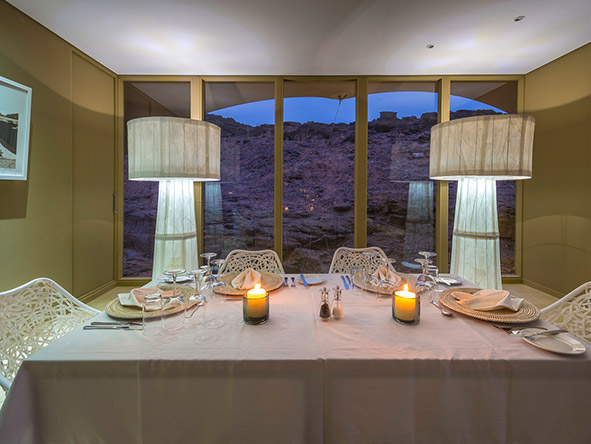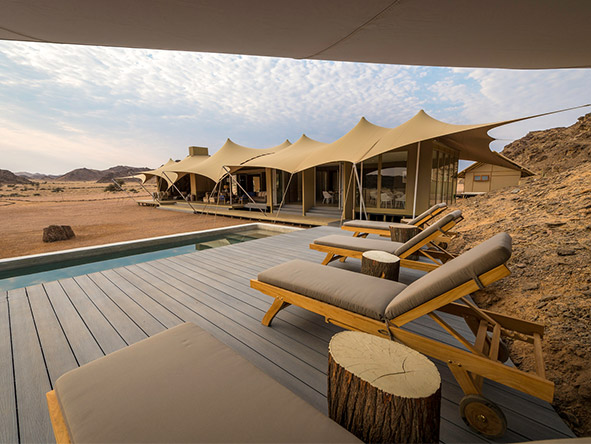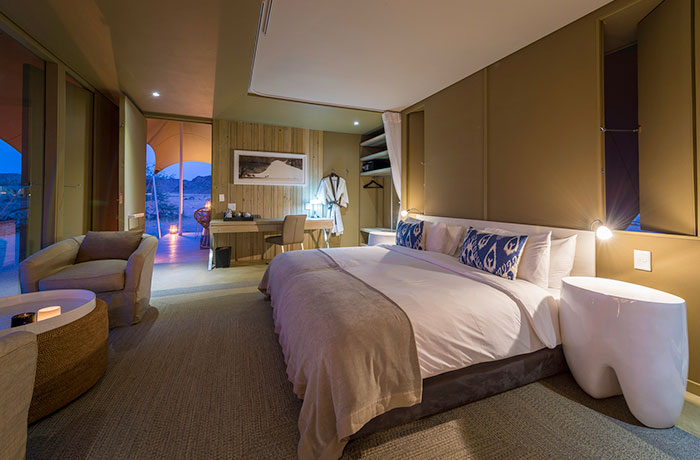Overview of Hoanib Skeleton Coast Camp
Namibia’s Skeleton Coast is an ethereal mix of vast plains and dry riverbeds, haunting shipwrecks and Victorian ghost towns, enigmatic desert elephants and endangered black rhinos. A very remote part of Damaraland in northern Namibia, the Skeleton Coast is a natural curiosity shop for adventurous travellers: nowhere else can you can see preternatural welwitschias – at 2 000 years, the oldest living desert plants in the world – or follow in the ancient tracks of Strandlopers, the original beachcombing hunter-gatherer residents. The semi-nomadic Himba people still live in the region, and use thousands of years of accumulated wisdom to survive the sometimes forbidding terrain.
Hoanib Skeleton Coast Camp is a 7-tent establishment in a rugged valley that is home to a surprising diversity of plant and animal life. Fogs off the Atlantic Ocean, formed when the icy Benguela Current meets the sun-baked desert air, ensure precious moisture that keeps this pre-historic environment alive. The transient Hoanib River supports a ribbon of vegetation that is the major source of food for desert-dwelling creatures, including giraffe, cheetah and springbok. Birders will be thrilled to spot a lanner falcon perched majestically in an isolated sheperd’s tree.
Enjoy presentations and interaction with wildlife researchers when they are present at the camp. Learn about important and fascinating conservation programs like the vital research on the unique desert-adapted lion.
While 4x4ing through the Skeleton Coast National Park, enjoy a picnic lunch on the dunes, watch the comical antics of throngs of grunting Cape fur seals on the beach or scan the mesmerizingly stark landscape for the iconic, sword-like horns of a lone oryx standing sentry in the sand.
Highlights & Activities
What's on offer whilst on this itinerary?

Full-day safaris

Game drives

Guided walks

Picnics
Rooms at Hoanib Skeleton Coast Camp
Unwind and relax, in your own private luxury
Standard Twin Tent
Built on an island in the dry Khumib riverbed, seven Meru-style twin-bedded tents are spacious and en suite bathrooms. A family-size tent is also available.
General Facilities
The main area of the camp consists of an open-plan lounge, bar and dining area with spectacular views of the desert. The emphasis on Hoanib Skeleton Coast Camp is getting out into the wild as much as possible.

Bar

Laundry service

Library

Solar power
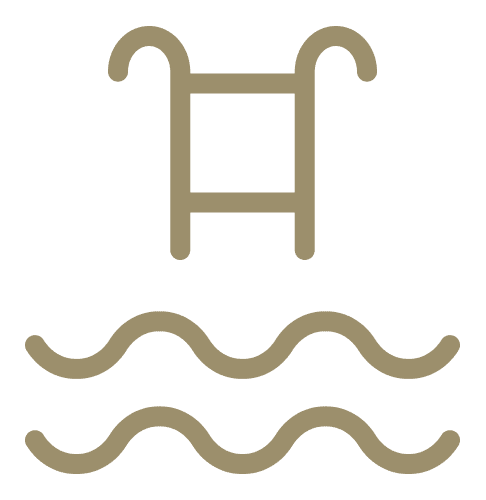
Swimming pool
Dining
Weather permitting, evening meals are served in the open-air dining room under an old leadwood tree from where incredible desert views can be enjoyed. Menus make use of both locally-sourced and imported ingredients.
Expert Opinion
We know because we go

Liesel van Zyl
Product Manager
We are delighted to represent this new gem in a very remote & beautiful part of Namibia. Surrounded by little more than breathtaking scenery and the odd desert-adapted elephant, I imagine this will become a very sought-after experience.
Why travel with Go2Africa?
Based in Cape Town, our team of experts are all born and raised in Africa.
When you travel with us you’re assured of the Big 5 Guarantee.
We Are Safari Experts
We have first-hand knowledge of every single destination, lodge and activity we recommend.
Our Best Price Promise
If you’re able to find a better quote for your itinerary let us know and we’ll match it.
Positive Impact
The money from your trip stays in Africa, supporting local communities and conservation projects long after you return home.
Full Service, 24/7 On Safari Support
We take care of every detail, offering 24/7 assistance and local know-how from the right time zone, until you return safely home.
Complete Financial Protection
Our clients are fully covered by our supplier default insurance, and Our accreditation bond with the Southern Africa Tourism Services Association

